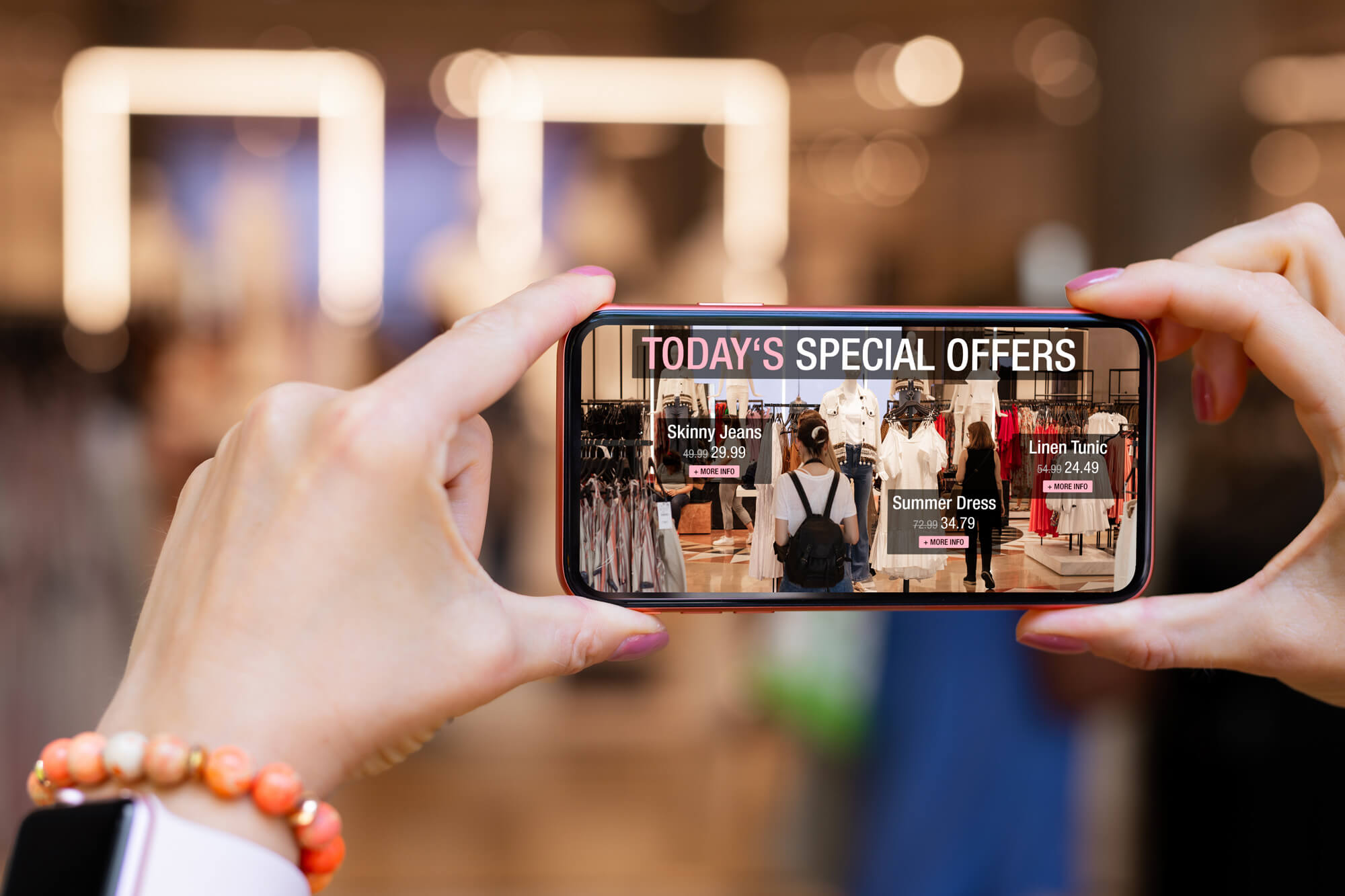
It would be nearly impossible to imagine the capabilities of virtual reality, or even to define the concept of a metaverse, even 10 years ago. But in 2022, augmented reality has entered the mainstream in entertainment, gaming and marketing. Augmented reality may soon expand to include live event experiences or meetings.
Augmented reality applications started with Snapchat, where face filters helped the platform explode in popularity in the 2010s. Now, AR has become much more sophisticated, fun and applicable to marketing goals. According to an eMarketer/Bizrate survey, 37% of respondents who had not shopped using AR were open to trying it.
Expand your connection with followers and current or potential customers with immersive augmented reality experiences. Not only can augmented reality expand existing products and services, we’ve also seen virtual industries crop up in recent years with the rise of NFTs.
Virtual shopping
Instagram’s recent additions to its Instagram Shopping applications have made for one of the most interesting trends in social media this year: direct, in-app shopping. Instagram has nailed the shopping habits of younger people, and the amount of Gen Z users who have experience using AR in shopping will increase to 41% by 2025.
Instagram’s addition of AR technology includes virtual try-on and the option to use AR in dynamic ads. In a dynamic ad with AR, for example, you could directly imagine a piece of furniture in your house through the ad, or try on a hat or “hold” a purse.
Reimagining spaces
You’ll never know how you really like a new shade of paint until the work is done. Until now.
Home improvement stores such as Home Depot, Lowe’s and IKEA offer augmented reality experiences that allow users to imagine a new shade of paint or a a piece of furniture.
For example, Home Depot’s Project Color app allows users to choose their ideal paint color and visualize how it would look on their wall by using a phone camera. Once they select their top choices for colors, the app provides brands and pricing. IKEA has a closet system builder that allows shoppers to create their ideal wardrobe space and then purchase the exact items to build it.
Virtual fitting rooms
Virtual fitting rooms have already been rolled out by brands such as Timberland, Adidas and Macy’s.
Zeekit, an AR technology company, began experimenting with virtual “try-on” apps for makeup through Sephora and has now expanded to allow potential buyers to visualize themselves wearing clothes before buying online. Walmart recently purchased Zeekit, showing its importance to the mega retailer.
Virtual fitting rooms could become much more universal because of their convenience, efficiency and ease of use. Plus, they make for a fun experience.
Virtual models and avatars
Luxury brands such as Sephora and Prada have already dove into virtual avatar modeling, aiming to provide more targeted, personalized experiences for social media followers in videos, social-media takeovers and events such as fashion shows. Some of the most notable virtual models include Zoe Dvir, Candy and Ella Stoller.
In what appears to be another step forward in influencer marketing, there are currently more than 150 “virtual human” influencers. Brands will spend up to $15 billion this year on influencer marketing.
Meta events
The metaverse has proved capable of making online interactions more immersive and convenient. For example, a business meeting in the metaverse can more closely simulate the meaningful connection of an in-person meeting without the travel.
The ability to draw a crowd virtually drives much of the innovation brands are making related to events. Some of the most ambitious events using AR include Gucci and Roblox’s Gucci Garden, which drew 19.9 million visitors, and Blavity’s AfroTech event.